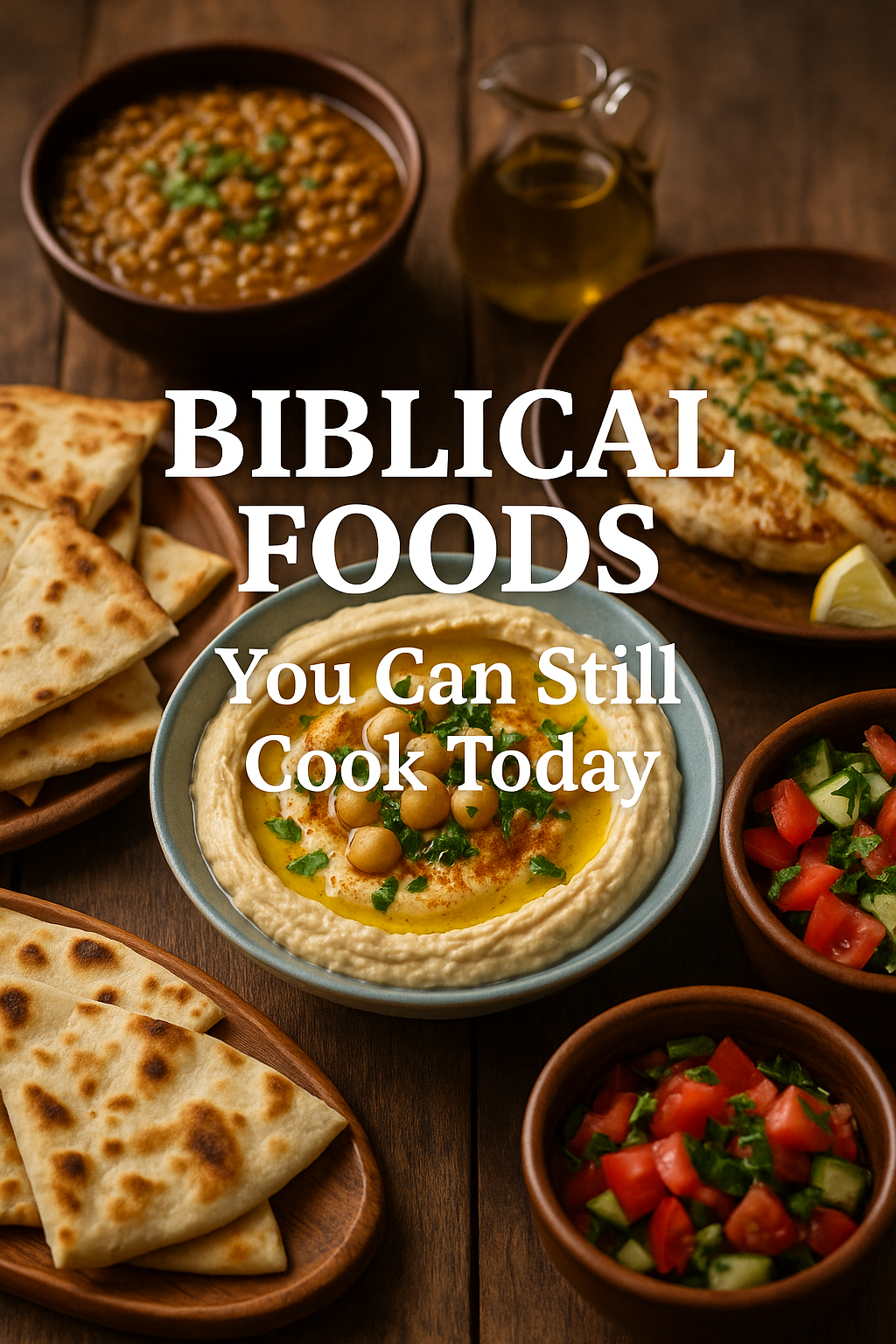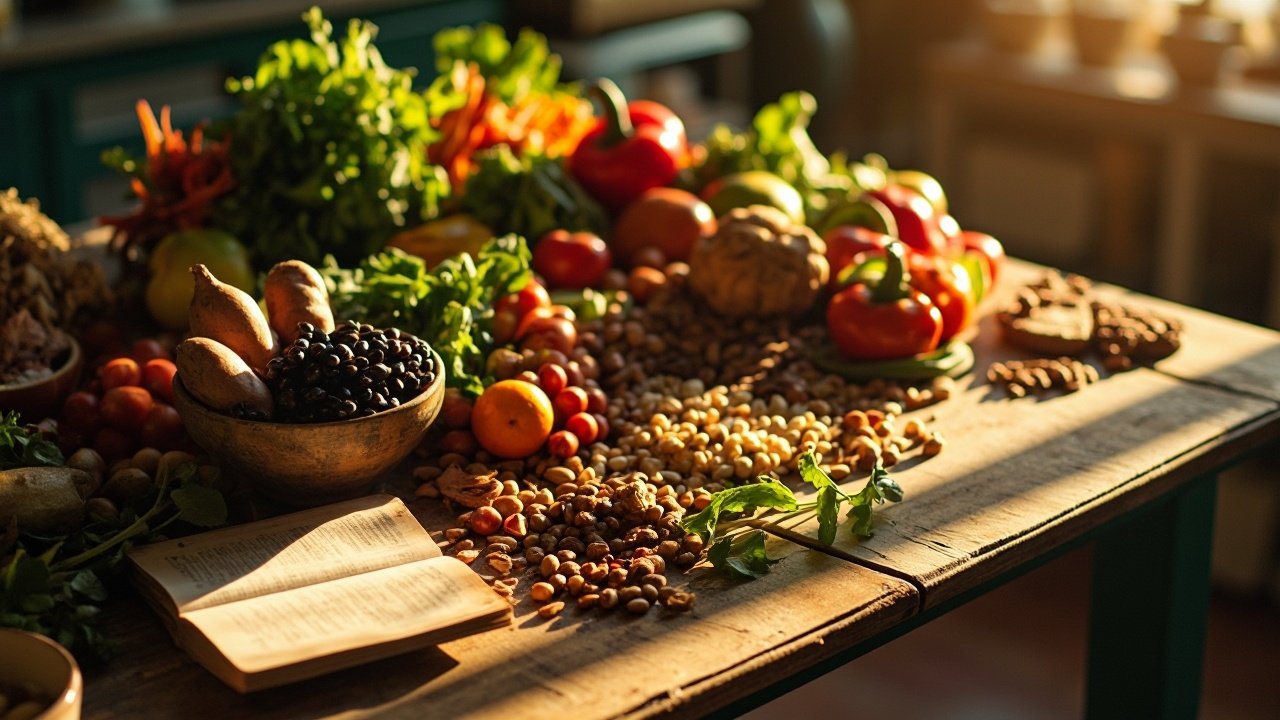Throughout Scripture, food is more than sustenance—it’s a symbol of covenant, blessing, and God’s provision. From Abraham’s hospitality to Jesus breaking bread with His disciples, meals brought people together and reflected God’s abundance. Today, many of the foods mentioned in the Bible are still part of our kitchens, allowing us to experience a tangible connection to biblical history.
This guide explores 10 biblical foods you can cook today, their historical context, and simple recipe ideas that bring Scripture to life in your own home.
1. Ezekiel Bread (Ezekiel 4:9)

“Take wheat and barley, beans and lentils, millet and spelt; put them in a storage jar and use them to make bread for yourself…”
Ezekiel bread is a hearty, nutrient-rich bread made with a combination of grains and legumes. In biblical times, it symbolized God’s provision during hardship.
How to Cook: Combine wheat, barley, beans, lentils, and spelt flour to create a wholesome loaf. Modern recipes are available that use sprouted grains for added nutrition.
Recipe:
- 2 cups whole wheat flour
- 1 cup barley flour
- ½ cup spelt flour
- ½ cup ground lentils
- 2 tbsp olive oil
- 1 ½ cups warm water
- 2 tsp yeast, 1 tsp salt, 1 tsp honey
Mix dry ingredients, add wet, knead for 10 minutes. Let rise 1 hour, then bake at 375°F for 35–40 minutes.
2. Lentil Stew (Genesis 25:34)

This is the famous meal for which Esau sold his birthright to Jacob.
How to Cook: Simmer red lentils with onions, garlic, cumin, and olive oil. Add carrots and tomatoes for depth. Serve with pita or flatbread.
Recipe:
- 1 ½ cups red lentils
- 1 diced onion, 2 chopped carrots, 2 cloves garlic
- 4 cups vegetable broth, 2 tbsp olive oil
- 1 tsp cumin, ½ tsp paprika, salt to taste
Sauté onion, garlic, and carrots in olive oil. Add spices and lentils, pour broth, and simmer for 30 minutes until thick.
3. Roasted Lamb (Exodus 12)
Lamb was central to the Passover meal, representing sacrifice and deliverance.
How to Cook: Roast lamb shanks or chops with olive oil, garlic, rosemary, and salt. Serve with unleavened bread and bitter herbs for a Passover-inspired dish.
Recipe:
- 2 lbs lamb shoulder or shanks
- 3 cloves garlic, minced
- 2 tbsp olive oil, 1 tbsp rosemary, 1 tsp salt
Rub lamb with seasoning, marinate 1 hour. Roast at 400°F for 25 minutes per pound, basting occasionally.
4. Olives and Olive Oil (Deuteronomy 8:8)
A staple in the biblical diet, olives provided oil for cooking, anointing, and worship.
How to Use: Drizzle extra virgin olive oil over salads, use in bread dipping, or roast vegetables with it.
Serving Idea:
- Enjoy olives as a side dish with herbs and garlic.
- Drizzle olive oil over roasted vegetables or bread with a pinch of salt.
5. Fish and Bread (John 21:9-13)

Jesus prepared a simple meal of fish and bread for His disciples after the resurrection.
How to Cook: Grill or pan-fry fresh fish seasoned with lemon, herbs, and olive oil. Serve with warm bread.
Recipe:
- 2 whole small fish (like trout or tilapia)
- 1 lemon, sliced
- 2 tbsp olive oil, salt, pepper
Season fish, drizzle with olive oil, stuff with lemon slices. Grill or bake at 375°F for 20 minutes.
6. Dates and Figs (2 Samuel 16:1)

These naturally sweet fruits were common snacks and offerings.
How to Use: Enjoy as dried fruit, stuffed with nuts, or added to baked goods.
Serving Idea:
- Stuff pitted dates with almonds or walnuts.
- Serve figs sliced with goat cheese and honey.
7. Milk and Honey (Exodus 3:8)
Symbolic of abundance, “a land flowing with milk and honey” reflected God’s promise.
How to Use: Try drizzling honey over yogurt or warm milk with cinnamon for a comforting treat.
Recipe: Warm 1 cup milk with 1 tbsp honey and a pinch of cinnamon. Serve as a bedtime drink.
8. Barley Bread (John 6:9)
The loaves multiplied by Jesus in the feeding of the 5,000 were made from barley.
How to Cook: Bake a rustic barley loaf or flatbread using barley flour, honey, and olive oil.
Recipe:
- 2 cups barley flour
- 1 cup wheat flour
- 1 tbsp honey, 1 tsp salt
- 1 cup warm water, 1 tbsp olive oil, 2 tsp yeast
Mix and knead dough. Let rise for 1 hour. Shape into small loaves and bake at 375°F for 25 minutes.
9. Grapes and Wine (Numbers 13:23)
Grapes were a major crop in the ancient Near East.
How to Use: Enjoy fresh grapes as a snack, roast them for a unique side dish, or use grape juice for a biblical-inspired drink.
Serving Idea:
- Roast grapes with olive oil and rosemary as a sweet-salty side dish.
10. Pomegranate Salad (Song of Solomon 4:3)
Pomegranates symbolized beauty, abundance, and fertility.
How to Cook: Sprinkle pomegranate seeds over a fresh salad of spinach, feta, walnuts, and olive oil.
Recipe: Toss spinach, feta cheese, walnuts, and pomegranate seeds with olive oil and balsamic vinegar.
Cooking Biblical Foods Today
Recreating these meals is more than a culinary experience—it’s a way to immerse your family in Scripture. Preparing and sharing these dishes can open conversations about the Bible, God’s provision, and faith in everyday life.
Cooking and sharing biblical foods reminds us that God provides abundantly, just as He did in ancient times. These simple, wholesome recipes connect us to faith, family, and tradition—nourishing both body and soul.
📖 “So whether you eat or drink or whatever you do, do it all for the glory of God.” (1 Corinthians 10:31)




